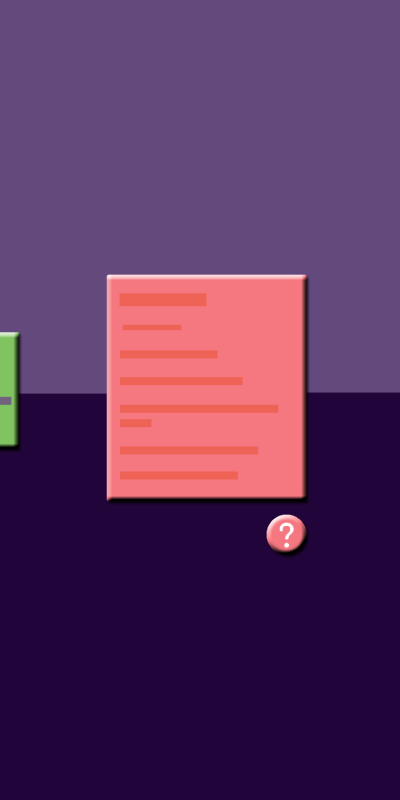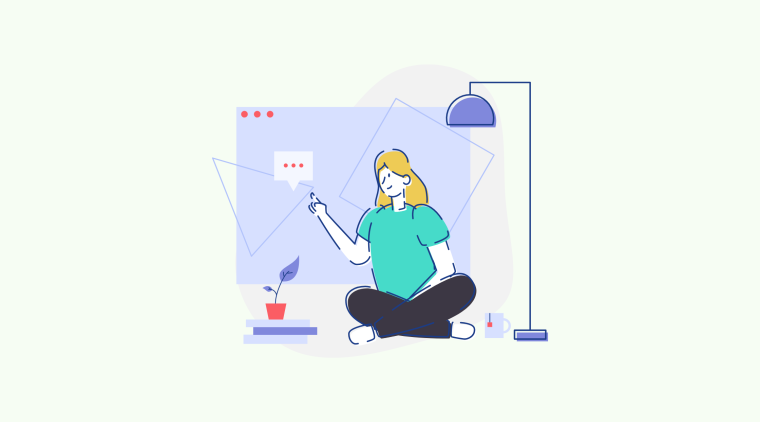A common myth about user onboarding
Some people believe “good products shouldn’t need user onboarding” and that “all you need is intuitive UX”, and they’re right. Kind of.
It’s because they’re thinking of “user onboarding” as this tedious product tour that intricately walks a new user through all the different features, settings and navigation items available.
That kind of user onboarding sucks, and no onboarding is probably better.
That’s not what we mean by user onboarding; product tours that pop up and intend to show users your product don’t work!
You’ve probably dismissed or exited out from those annoying popups hundreds of times; we do too!
There are two problems with this kind automatically triggered (“push”) in-product experience:
- It’s really hard to get the timing right
A user may not be ready to engage when it displays. For example, if you show a welcome modal immediately upon first sign-up, that covers your app, it feels like a barrier to the aha moment, and actually blocks a user’s path to success.
The timing is wrong because users are motivated to explore and are not ready for any other distractions or extra help. And, if you wait too long to show user onboarding help, then probably some users will bounce without ever seeing your walkthrough or successfully converting.
- Most users learn by doing, not reading or seeing
This means a traditional product walkthrough is actually being counter-productive because it’s preventing users taking actions, and causing them greater anxiety as they have more information to process and hold in their temporary memory. This is why users often click “Next” quickly until the product tour ends, without taking much time to study or internalize what’s being shown.
User onboarding requires sophistication and nuance to design; hoping to solve it with a simple product walkthrough is naive and disappointing.
Therefore, we recommend three things:
- Use product tours to address specific product friction (rather than offering general tours of the product)
- For automatically triggered product tours, keep them very short and punchy. We suggest 1-2 steps, and to treat them as in-product ads rather than tours.
- Provide easy access to interactive self-service learning. We’ll dive into this for the rest of the article.
And we have proof of this last point, after analysing over 15 million user interactions. The chart below is drawn from our Product Tour Benchmarks report and shows that self-serve tours had higher completion rates than those automatically shown to a user.
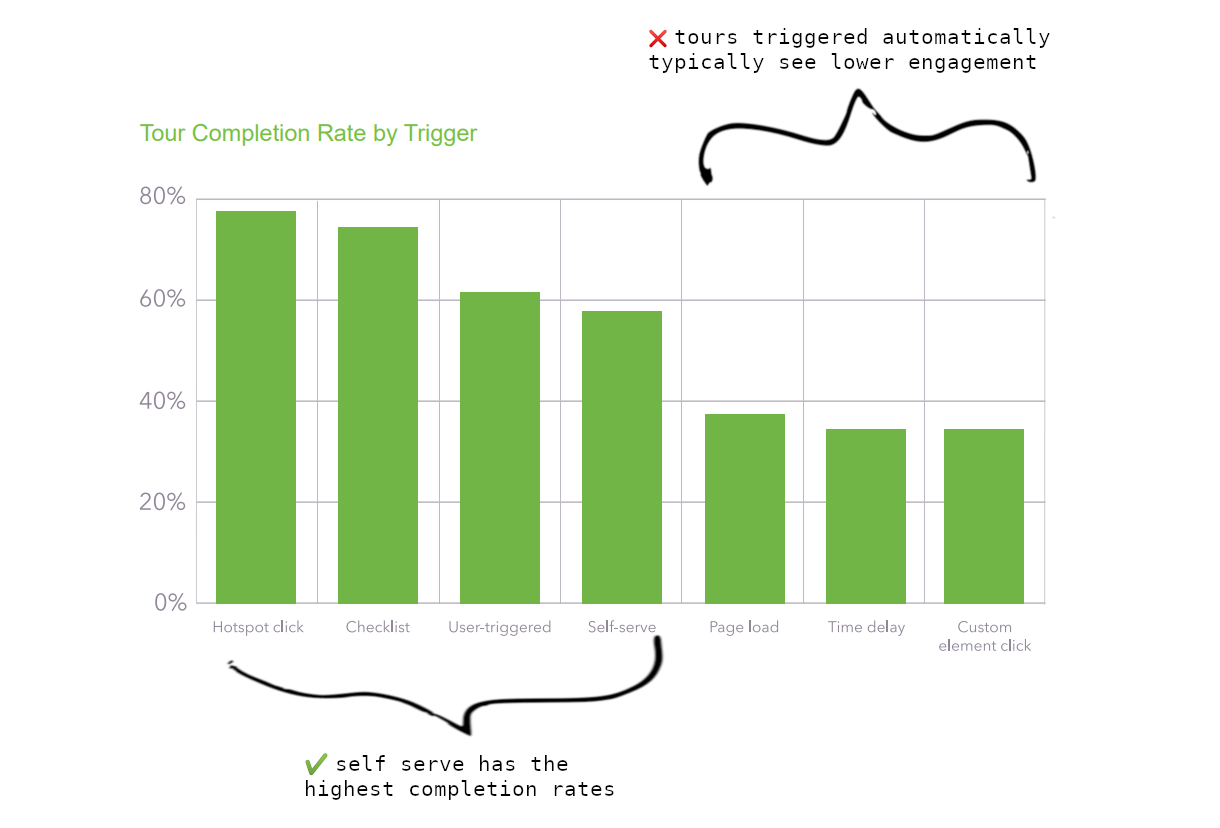
(Source: Product Tour Benchmarks and Best Practices: 2019 Report)
First, a quick recap on some of the user psychology you need to understand to be able to effectively communicate with your users:
How are you helping your motivated users?
The goal of user onboarding is normally some kind of activation or conversion metric. To help users take those actions requires an understanding of their aha moments, but also the psychology of what causes them to act.
BJ Fogg describes, in his Behavior Model, three components necessary for people to take action: motivation, ability and prompts. This can help you define your user onboarding or customer engagement strategy by:
- Motivating users that don’t understand your value proposition
- Making it easier (improving the ability) to take key actions
- Triggering these actions using timely prompts
If you’re looking to improve your new user conversion, then we recommend you start by employing product marketing during the user onboarding experience.
However many of your users are probably motivated enough to explore your product after signing-up for it and are actively seeking to find value. This is a crucial time for your product to provide aha moments and build a relationship with the user.
While users may dismiss or exit any product tour (as explained above) they are still looking to learn about your product. Some ways that companies do this today:
- Welcome email with key tips or links to resources
- In-app chat message, sometimes offering a call or demo
- Help Center with a “Getting Started” section
- User Onboarding checklists
- On-demand product tours or in-app education
Different channels (e.g. email, in-product, help center) serve different purposes (read why you need emails and in-product engagement to learn more). For users that are currently engaged or motivated you need to leverage in-product experiences to provide timely help.
Chameleon’s Launchers offer customized self-service widgets
We help customers solve for these situations using Launchers; self-service widgets that can contain links, product tours, microsurveys and more.
A Chameleon Launcher contains two parts: the Widget (or target) and the Menu (or window). The widget is what displays on the page to let users open the menu, which contains Items you choose.
The Widget can be customized in many ways:
- Choose text, your own icon or one from Chameleon’s library
- Adjust the color, size, positioning etc. of this icon
- Use an existing element on your page instead of an icon
- Set which pages the widget appears on
You can then set Items within the Menu, including:
- URLs, e.g. to open help articles or blog posts in a different page
- Tours built with Chameleon, e.g. to provide a more detailed walkthrough of a feature
- Microurveys built with Chameleon, e.g. to understand what users are finding difficult or to collect other feedback
- Custom code, e.g. to open an Intercom or Zendesk chat messenger window
You can target the Launcher to appear only for users that meet certain criteria based on their attributes or events they have / haven’t completed. You can also set further sub-targeting for each Item within a Launcher.
5 ways companies are using Chameleon’s Launchers
With the flexibility that Launchers provide, here are some example use cases:
1. Onboarding checklist
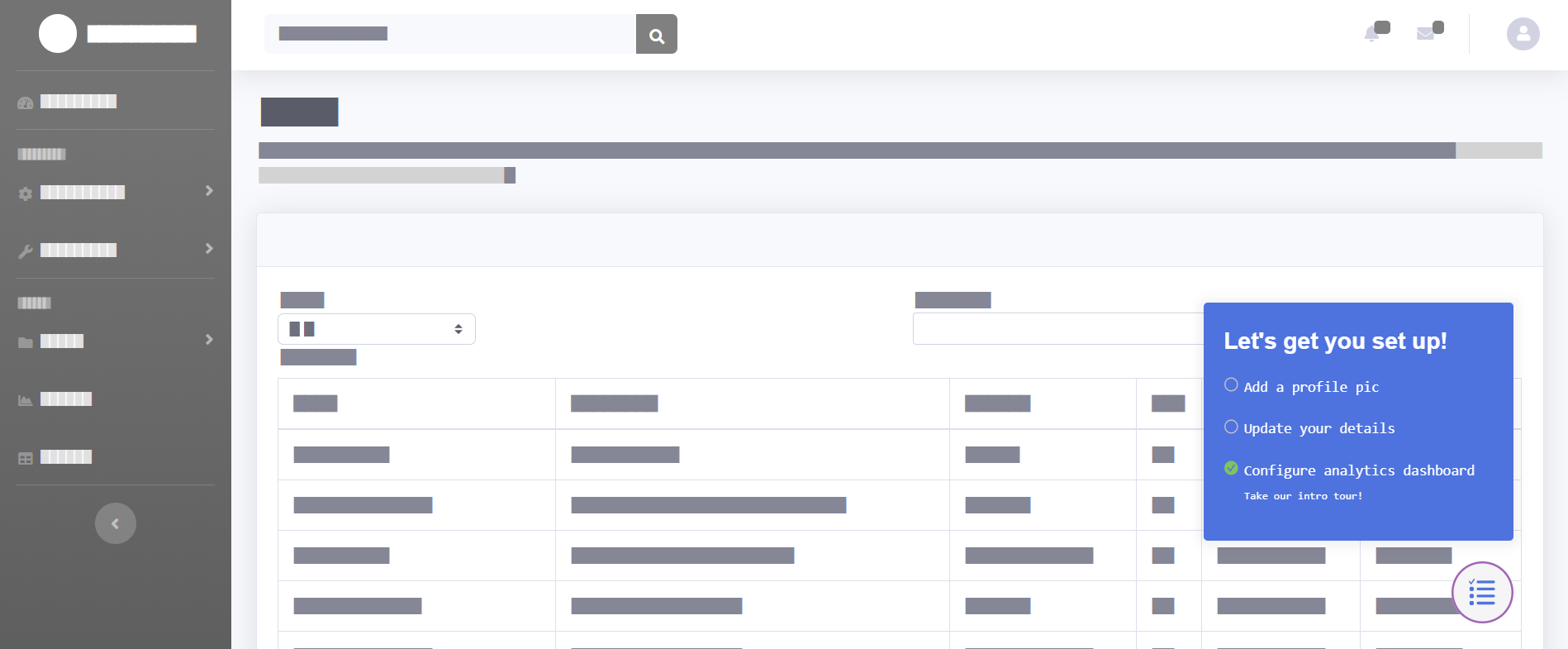
You can set a Chameleon Launcher to behave like a checklist, such that Items are marked completed once a user meets the success criteria.
For example, you can set a Tour to be marked complete only once a user completes a certain event.
Onboarding tasks can trigger a Tour, open a URL, or run custom code from your app or its integrations.
2. Feature deep-dive
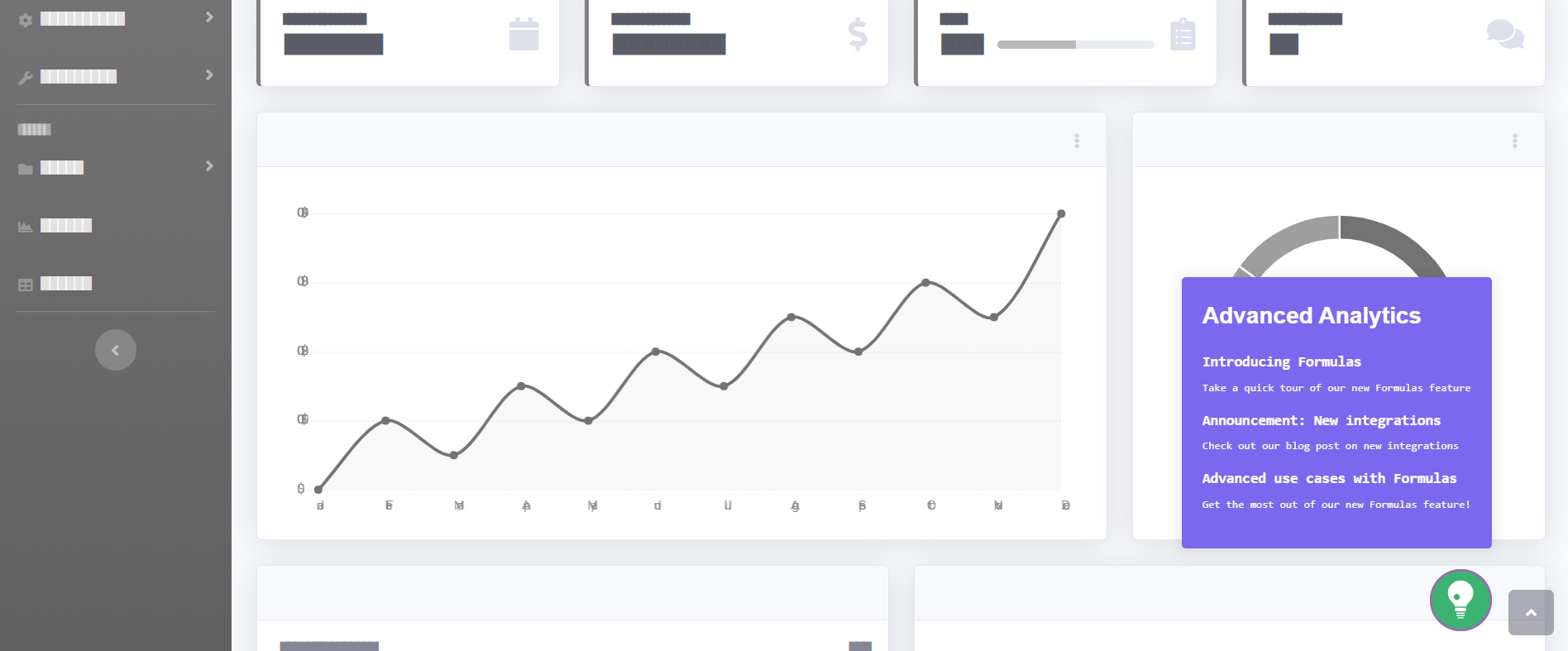
You can create different Launchers for different pages, and use these to provide deeper walkthroughs and best practices for the relevant feature a user is viewing.
For example, if your product had an analytics page, you could show:
- a recent blog post announcing changes,
- a help article with FAQs,
- a couple of product tours for the most common workflows.
All from the same Launcher.
You can also show variations of Launchers based on the role or persona of a user, to maintain a high signal-to-noise ratio from the user perspective.
3. Help Center

Providing a high signal-to-noise ratio is all about context. Showing users the most relevant help articles for the page they are on will mean they are more likely to learn more, solve their own problems, and become deeper experts.
You can not only link to your help articles, status page etc. but you can also launch your support chat window directly from Chameleon. Using custom code as an Item within a Launcher means you can open Intercom Messenger, Zendesk Chat, Help Scout Beacon etc. directly from within a Launcher Menu.
Because you can customize the Widget (can choose your custom icon, or page element) you can have a native experience without having to build it in-house.
4. Video gallery
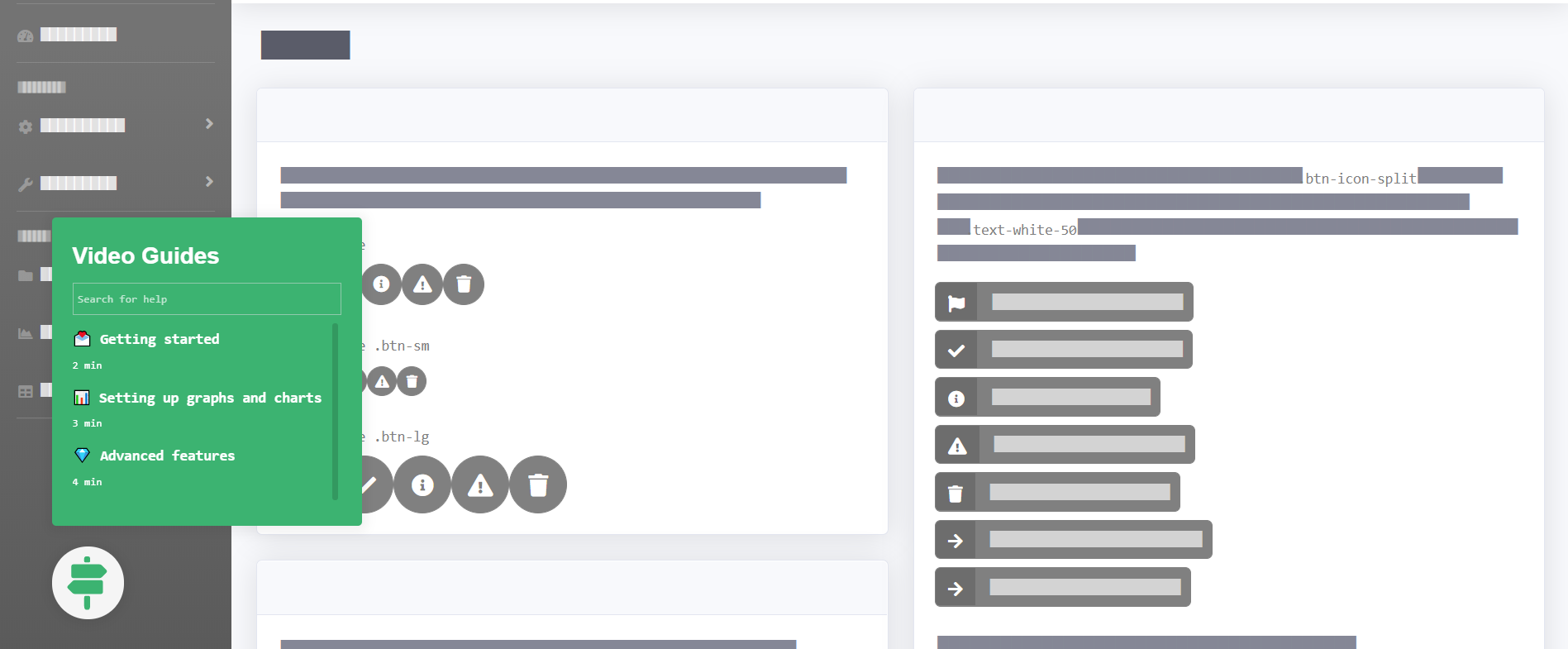
If you already have great video content explaining your product, or showcasing how customers are using it, you can provide easy access to this using the Launcher.
Here’s what the video looks like once a user makes their selection:
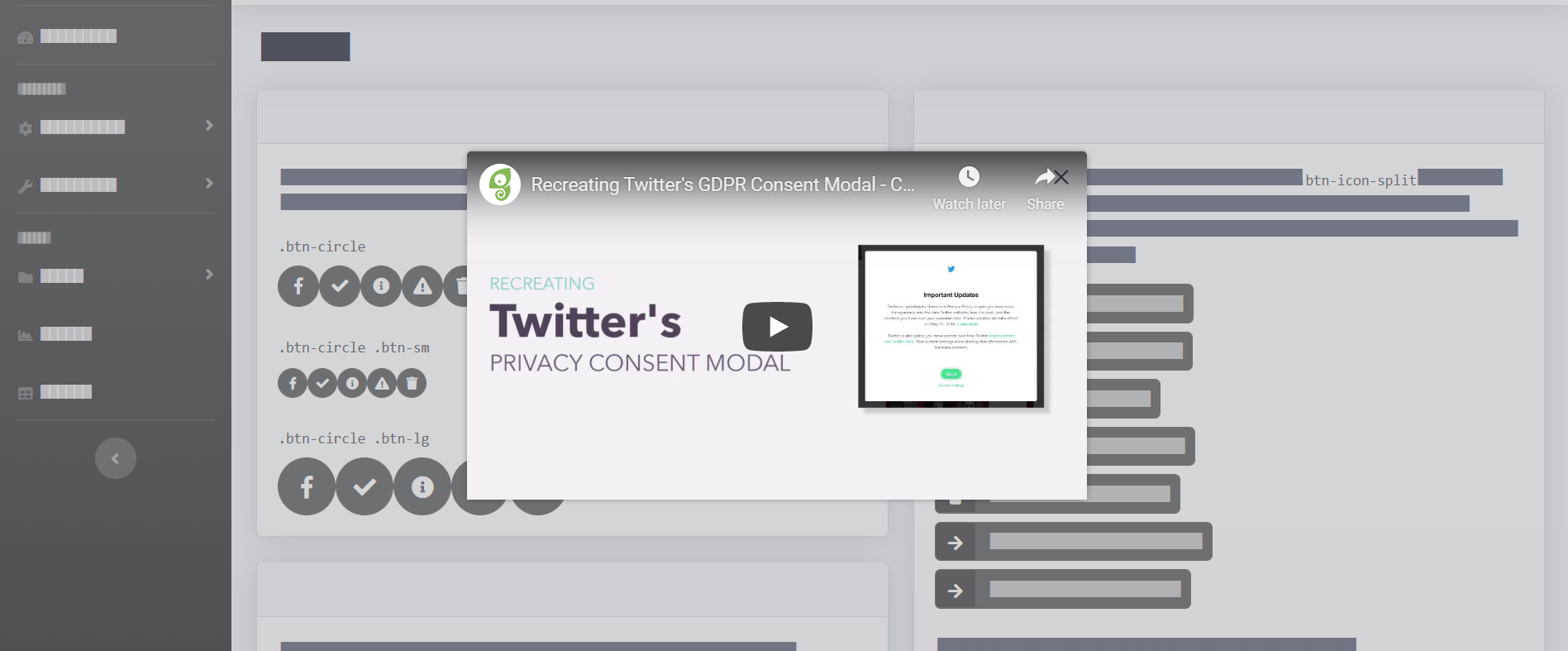
Simply add each video as a single step product tour to display it in-app when a user clicks on that Launcher item.
5. Feature announcements center
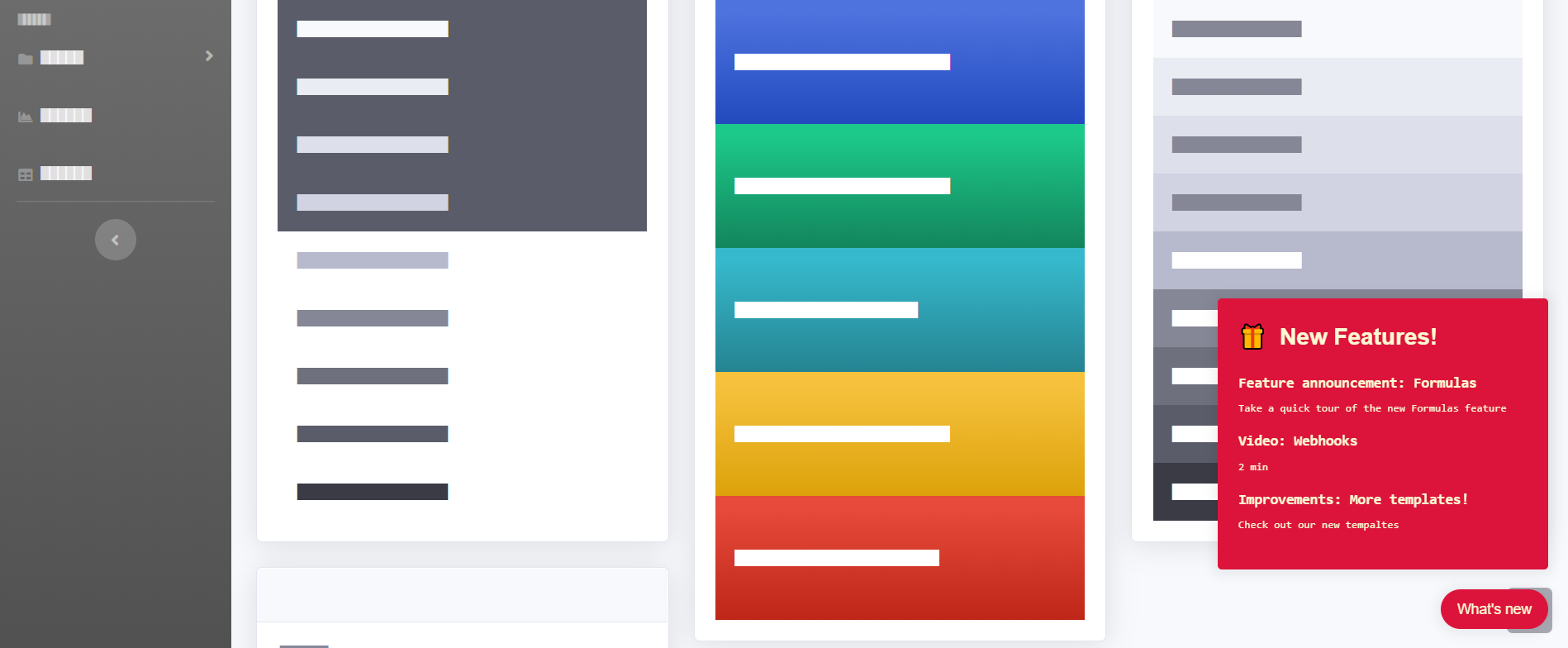
A lot of companies have basic new feature announcement centers, where they can notify users of product updates. Unfortunately most of these link to blog posts, and require some engineering or limited control.
With Chameleon Launchers you can build a new feature announcements center without writing any code. You can also hide items from the menu once they are completed, so that only “unread” items show up.
If you have some features that are only applicable to certain users, then you can also set the related item to only show for those users.
Learn how to create and configure Launchers in the Help Center here, or request a demo here.
Self-service help is a core component of product success
It’s important to offer your users an easy way to discover features or deepen their understanding in a way that lets them be in control. Emails are noisy with low open and click-through rates, and help articles are hard to navigate and apply.
Whether it’s for new users experiencing your product for the first time and looking to evaluate functionality, or long-time customers who are stuck with an old understanding of your product, you can leverage self-service help and self-service learning to drive discovery, adoption and engagement of your product.
Chameleon’s mission is to enable teams to drive product success (and product love!) through a combination of in-product experiences, and Launchers are a critical component in that.
To discuss your in-product experience strategy simply get in touch with us here.
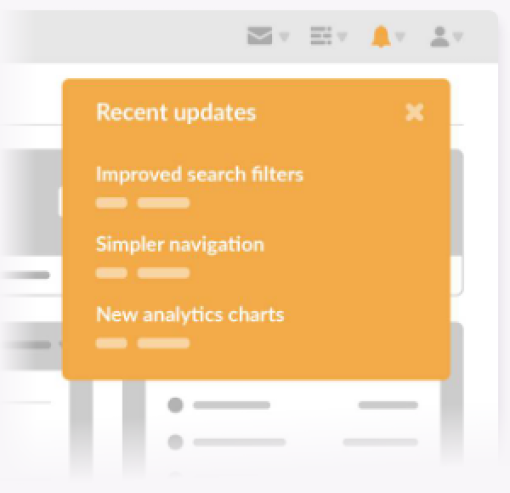
Drive Feature Adoption 🚀
Attach a release log to a widget or any native button in your app with Chameleon, and announce features in context
